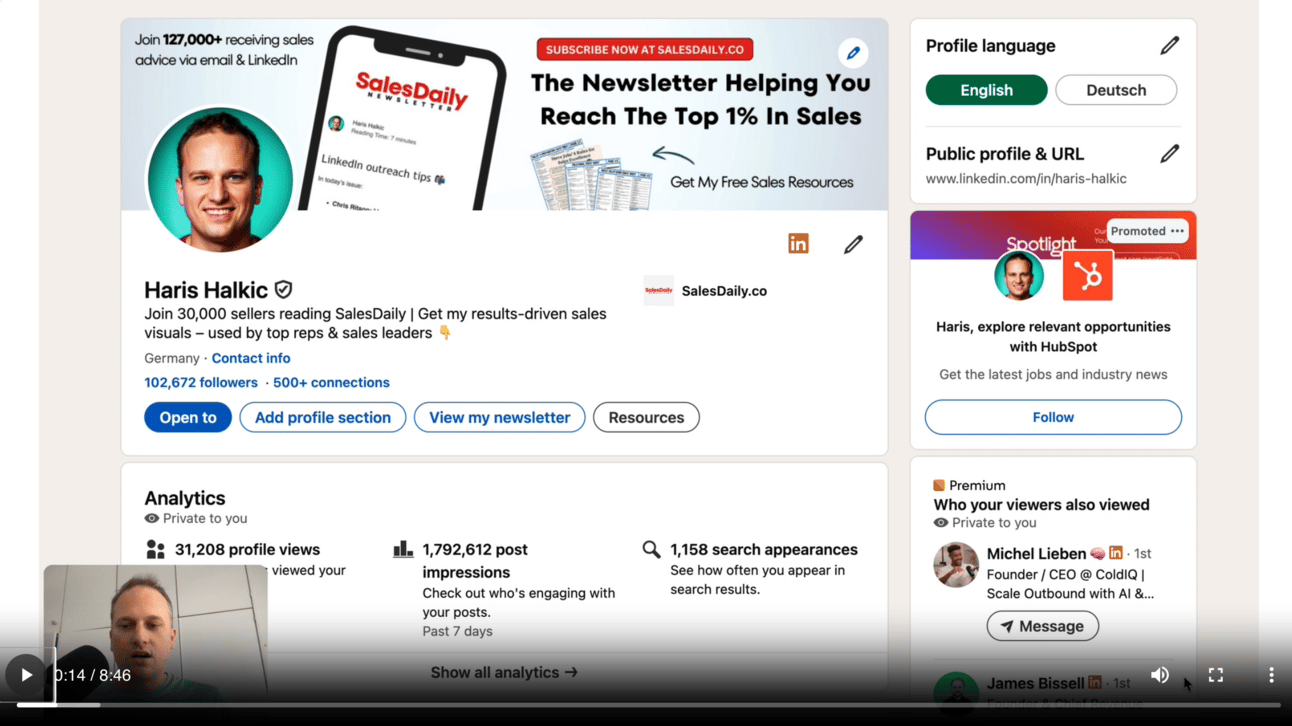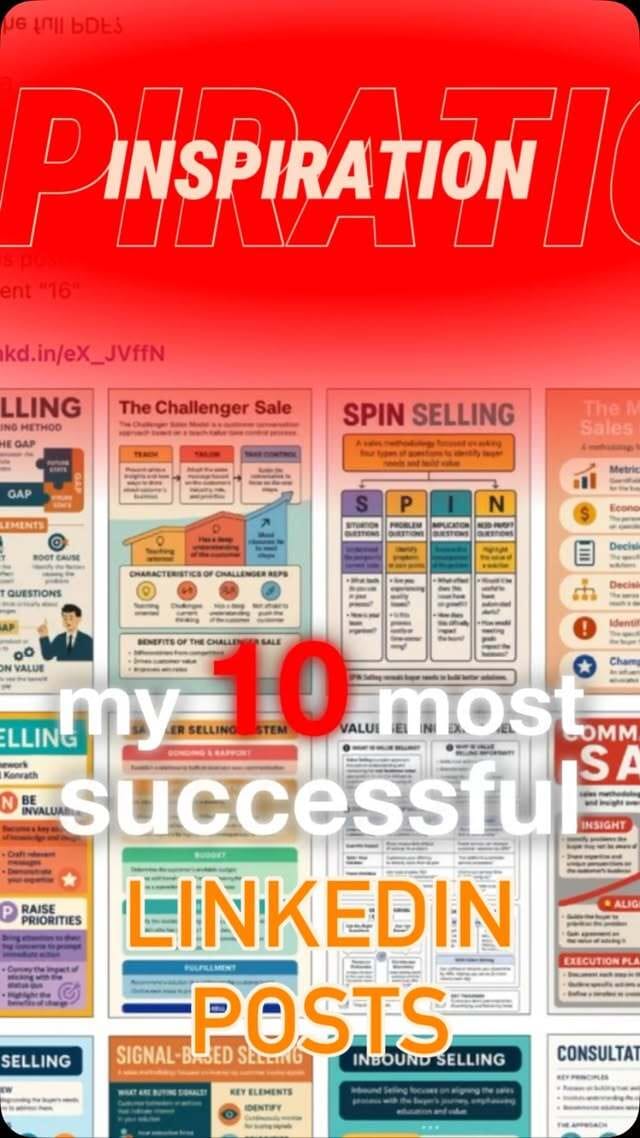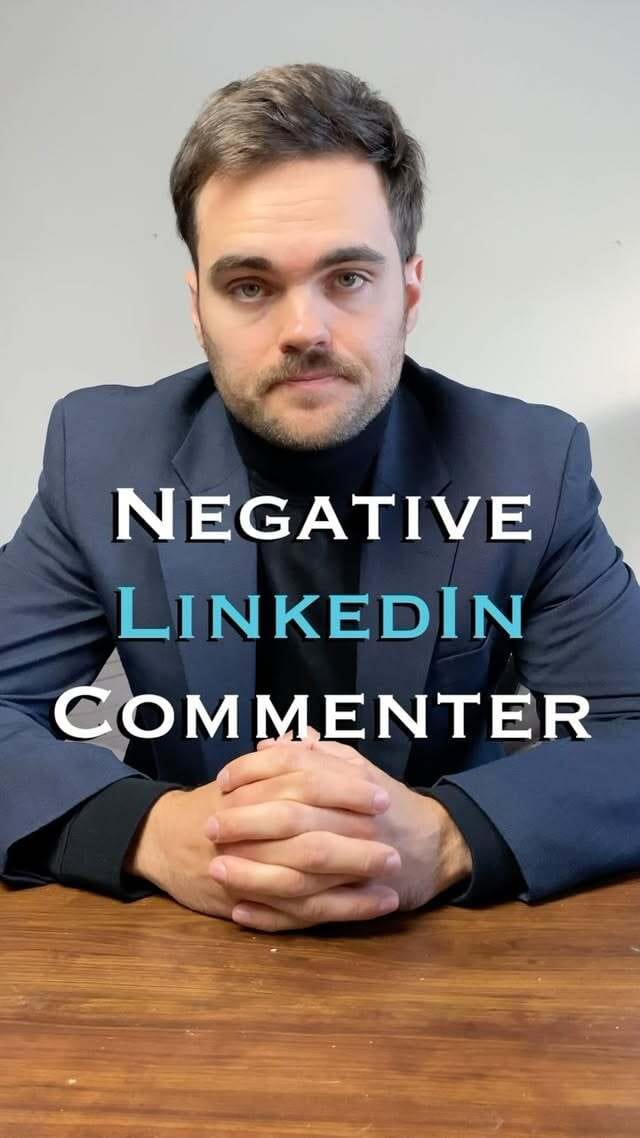- The Blue Sheep Newsletter
- Posts
- 100K (I'm back.)
100K (I'm back.)
New issue of The Blue Sheep Newsletter on Mastering LinkedIn
Hi 👋
It’s been a while.
I haven’t published this newsletter in months - but starting today, I’m bringing it back.
You can now expect one practical issue in your inbox every Saturday. If it’s no longer relevant for you, there’s an unsubscribe link at the bottom.
But if you care about growing on LinkedIn, getting visibility, and turning that into opportunity… this will be worth your time.
Let me catch you up.
In the time I’ve been away, I quietly passed 100,000 followers on LinkedIn.
No big announcements. No viral hacks. Just consistent systems, content that actually helps, and a clear strategy behind everything I post.
Hitting that milestone made me realize it was time to bring this newsletter back, and also time to finally relaunch something many people have asked me for:
👉 The LinkedIn Growth Blueprint - my full, updated system for how I grew, what I’d do if I started today, and how you can build your own traction engine without spending hours every day online.
I recorded a short video walking through some of the numbers behind that growth: follower stats, post performance, impressions etc.
You can watch it here:
If this is not the right time and you just want the best posts I’ve found on mastering LinkedIn, here they are…
In today’s issue:
Chris Donnelly: People always get this LinkedIn strategy wrong
Will Aitken: LinkedIn networking moves getting your posts seen
Will McTighe: How LinkedIn sales content actually work in 2025
Mandy McEwen: Hidden LinkedIn signals you’re probably ignoring
I’ve started sharing more sales and LinkedIn content over on Instagram. Would love to see you there!
I just uploaded a video walking through my top 10 LinkedIn posts of all time - with the exact impression numbers for each.
If you're curious what actually worked (and how big posts really perform), it's all there.
You can check it out here →
Most people get this LinkedIn strategy wrong
Chris Donnelly points out that majority of salespeople in LinkedIn make one big mistake: they confuse growing audiences with growing their businesses as “one”:
Begin with serving your clients
Build trust before pitching your product.
✔ Showing up consistently
✔ Educate on their problems
✔ Relate with client’s needs
✔ Relationships over short-term wins
✔ Engage with depth & authenticity
This builds a good reputation people want to respond to.
Don’t wait for opportunities.
Reach out directly with context.
➤ Ask relevant questions in DMs
➤ Comment with helpful insights
➤ Personalize connection request
➤ Filter your page to reflect on ICP’s
➤ React daily to posts from prospects
➤ Study what they post:
↳ Can you solve pain points they mentioned?
↳ Can you build on a viewpoint they shared?
↳ Can you introduce them to someone helpful?
Every message should feel earned—not random.
Optimise your profile and offer
If your profile looks average, don’t expect good leads.
❖ Banner: Make it clear what you help with
❖ Featured: Include 2 proof-based assets
❖ Job title: Add context + links to your offer
❖ Job section: Add work media, platforms
❖ URL: Use a customizable portfolio links
Landing page checklist:
➡️ Headline: Who it’s for exactly
➡️ Subhead: What result it brings
➡️ CTA: Make it action-focused
➡️ Proof: Show results and urgency
Use lead magnets to warm up traffic
↳ Build something simple and useful:
Cheat sheets, checklists, templates, short guides
These help make cold views into warm leads—without a pitch.
Segment and personalise everything
Audience too broad? Your effort won’t convert.
⇒ Segment by current role, industry, or buying stage
⇒ Personalise messages and offers to each group
⇒ Use filters in Sales Navigator to refine outreach
Stop sending generic, one-size-fits-all content.
Understanding your funnel personally
Every piece of content should serve a stage:
TOFU (Top of Funnel): Get attention → teach something
MOFU (Middle): Build trust → always stay top of mind
BOFU (Bottom): Convert → make a straightforward ask
Expect 10% of your 97% to convert—if you do it right.
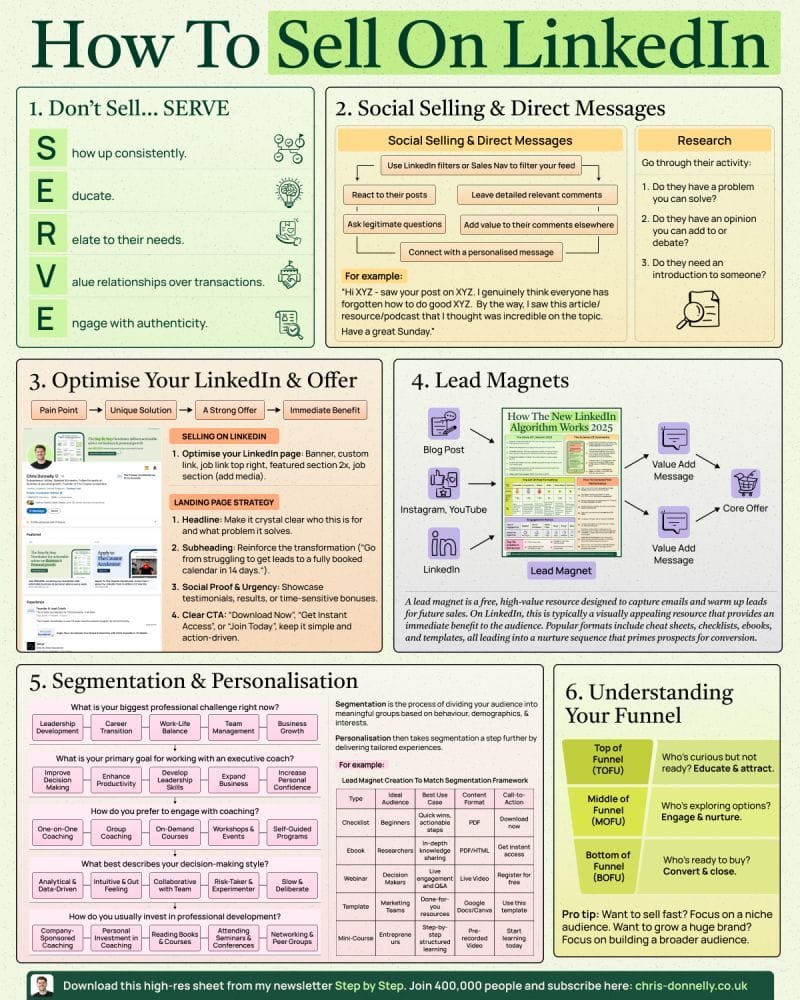
LinkedIn networking moves getting posts seen
Will Aitken discusses how anyone can grow on LinkedIn in 2025 — even if you think LinkedIn is saturated. Follow this exact strategy in growing your business audience:
Step 1: Post what you actually do
You don’t need to be a professional expert.
Just teach what you're learning in real time.
↳ If you’re in sales → Talk about cold email mistakes, discovery questions
↳ If you're in HR tech → Share adoption issues or prospect conversations
↳ If you're a recruiter → Post market trends, objections, and success stories
↳ Focus on helping someone 1–2 years behind you in terms of experiences
People don’t want theory. They want relevance in practice
Step 2: Build network, not just content
Engage with creators in your niche before attempting to go viral.
➤ Search your current niche and follow the biggest voices
➤ Comment on their posts daily — 9+ word responses get noticed
➤ DM or connect with them personally and build relationships
➤ Their engagements can reflect your posts to wider networks
Stop lurking behind the shadows.
Start participating, and going out there.
Step 3: Nail your hook with great content
Smart content without a strong hook gets ignored.
❖ First line must grab attention — curiosity, surprise, numbers, emotion
❖ Look at other people, observe what kind of hooks gets your attention
❖ Study formats that work: visual headlines, unexpected stats, bold statements
❖ Borrow ideas from YouTube titles, trending memes, even breaking news
Hook them fast or lose them instantly.
Step 4: Stand out with your personal style
In a sea of sameness, originality wins.
✔ Be funny, punchy, or brutally honest
✔ Swear depending on the context (if it fits)
✔ Use memes, jokes, or storytelling
✔ Find the white space — what no one else is saying
Don’t copy what everyone is doing.
Compete with your own personality.
Step 5: Build demand, don’t just advertise
Your best content makes people want to work with you—without needing to pitch.
⇒ Post valuable insights tied to your offer
⇒ Establish that you solve real problems
⇒ Mix in product mentions once in awhile
⇒ Use proof and client wins to build reliability
The goal is to be the first person they think of when the need arises.
Step 6: Be ridiculously consistent with things
Post at least once per day — ideally twice (with different formats or topics).
⇢ Don’t expect consistent leads in just one week
⇢ Posting daily for 90 days before judging results
⇢ Each post improves your current skills and data
⇢ LinkedIn always rewards frequency with reach
Consistency builds competence, credibility, and compound growth.
What LinkedIn sales content actually work in 2025
Will McTighe found most LinkedIn advice outdated — especially when it comes to sending video formats. If growth is your objective, here’s what to do instead:
What actually works in year 2025
Carousels no longer dominate.
Photos are making a comeback.
✔ Post vertical images content (1200×1500) — they outperform by 62%
✔ Selfies and human-made visuals now beat overdesigned graphic pieces
✔ Use captions and show your face in the first seconds if you do use video
✔ Share personal pictures or behind-the-scenes content weekly to build trust
Connection beats perfection.
Write like a human (not a brochure)
Your content must sound like a real conversation.
➤ Keep text content between 1,250–3,000 characters
➤ Grade 5–7 reading level → use short, simple words
➤ Avoid walls of text — aim for 14+ short paragraphs
➤ Hooks matter: Start with curiosity, surprise, or contrarian takes
➤ Use short sentences for posts (10–19 words per paragraph)
➤ Ask: “Does this help someone get ahead in their career?”
Use this structure and LinkedIn’s algorithm will work for you — not against you.
Post structure matters more than ever
Good LinkedIn posts are readable, and easy to skim.
⇒ Short paragraphs
⇒ Clear formatting
⇒ External links? Add them later, once engagement picks up
⇒ Include transformation hooks like:
• “From X to Y in Z time”
• “How we went from 3 leads/week to 14 qualified demos/day”
If it’s not exactly clear how it helps the reader, rewrite it.
Timing + engagement strategies work
The best window is Sundays between 11AM–1PM GMT.
❖ Write about 10–20 comments on others’ posts daily
❖ Make your comments >9 words with personal insight
❖ Stay active for 15–30 minutes after posting something
❖ Maintain a consistent posting schedule for retention
The LinkedIn algorithm rewards consistency.
Reciprocate and your content will reach people.
Forget carousels - Post case studies.
If your current goal is leads, then post stories with proof.
↳ Weekly case studies outperform
↳ Add screenshots (DMs, testimonials)
↳ Show “before and after” transformation
↳ Focus toward outcomes, not just effort
You don’t need more content.
You need content that converts.
TO GO
Christian Krause: LinkedIn strategy that increases acceptance rates
Mandy McEwen: Hidden LinkedIn signals you’re probably ignoring
Daniel Korenblum: From posting randomly to a strategy machine
Chris Cozzolino: Stategies in beating LinkedIn’s message problems
Two of my favorite newsletters:
Creator Spotlight: Building an audience with social media
Big Desk Energy: The Beehiiv story, straight from the founder
Check them out!
MEME OF THE WEEK 😂
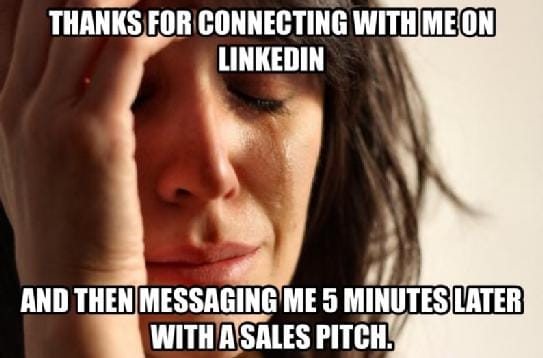
P.S. If you like this newsletter, let others know about it! Truly appreciate it!
